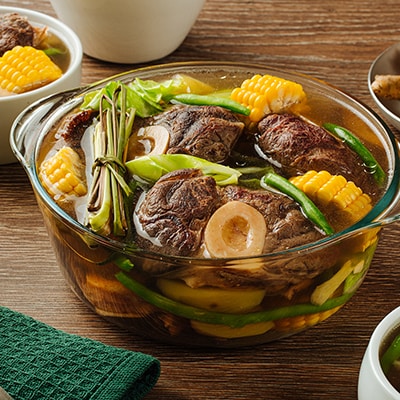No menu will succeed if it relies solely on frying or boiling. Customers seek variety not just in ingredients but also in how their food is prepared. Many now look for healthier options, evident in Quezon City’s mandate requiring establishments to display calorie information on menus. Thus, mastering different types of cooking methods is essential for showcasing your kitchen’s capabilities and delivering an exceptional dining experience.
Here’s a comprehensive guide to essential cooking methods and techniques to help with your R&D and menu engineering. Use this refresher to fuel culinary creativity and develop new, exciting offerings.

Moist-Heat Methods
Moist-heat methods rely on liquids such as water, broth, or steam to transfer heat to food. These techniques help retain moisture and are ideal for tenderizing proteins and preserving nutrients.

Blanching
This basic cooking method involves briefly placing food in boiling water or oil to remove external membranes or prepare it for further cooking. You can also blanch fruits and vegetables like peaches and tomatoes to prevent overcooking.
There are two ways to blanch. The first is by adding an ingredient to cool water, bringing it to a boil, then lowering to a simmer. The other option is to plunge food directly into boiling water and then shocking it in ice-cold water. Oil blanching is also used in dishes like chicken cordon bleu, where food is briefly fried before finishing in the oven.
Best for: Vegetables, nuts, tomatoes, liver
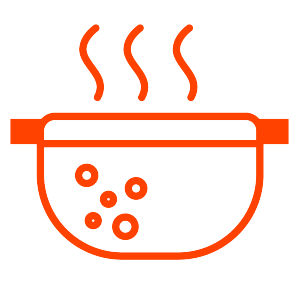
Boiling
Boiling is a cooking method that requires fully immersing food in water or broth at 212°F (100°C). This technique is ideal for preparing pasta, grains, and eggs, as it efficiently cooks ingredients while maintaining their structure. To preserve nutrients in food, minimize the boiling time, especially for delicate items like vegetables.
Best for: Pasta, potatoes, corn on the cob, fish, shellfish
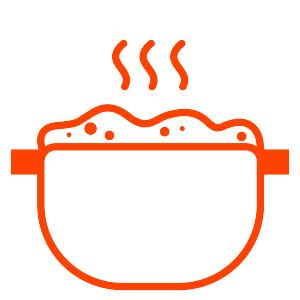
Simmering
Simmering is a cooking method similar to boiling but at lower temperatures, ranging between 185°F and 205°F (85°C and 96°C). This gentle technique allows flavors to develop gradually, making it ideal for tenderizing tougher cuts of meat, enhancing stews, and enriching soups.
Best for: Braised meats, stews, soups, legumes

Poaching
Poaching is a cooking method that involves simmering food in water, broth, or milk at temperatures below the boiling point, typically between 160°F and 180°F (71°C and 82°C). This technique is ideal for delicate food like fish, eggs, and poultry, as it helps retain moisture and prevents overcooking.
Best for: Eggs, fish fillets, chicken breasts, fruits
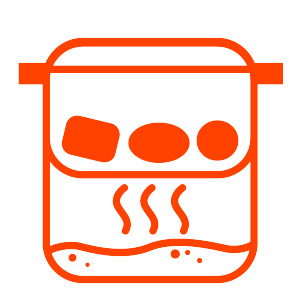
Steaming
Steaming cooks food using steam instead of direct water contact. It helps retain nutrients and natural flavors while keeping ingredients moist.
Best for: Vegetables, seafood, dumplings, rice cakes

Confit
Confit is a slow-cooking method where food gently cooks in its own fat or oil at a low temperature over an extended period. This process gradually renders the fat, enhancing both flavor and preservation. Once cooked, the meat can be packed into a pot and covered with additional fat to create an airtight seal, extending its shelf life and intensifying its taste.
Best for: Duck, garlic, pork belly
Dry-Heat Methods
Dry-heat cooking uses direct or indirect heat without the need for liquid, often creating a crispy or browned exterior.
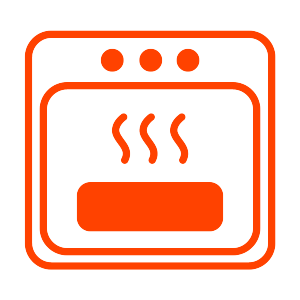
Baking
Baking employs dry heat in an oven to cook food evenly from all sides. It is commonly used for dough-based dishes but also works for meats and vegetables.
Best for: Bread, cakes, pastries, casseroles, salmon
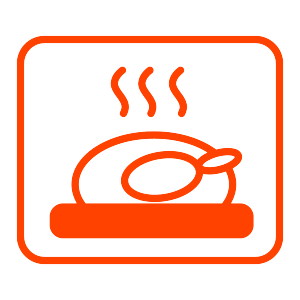
Roasting
Roasting is a cooking method that exposes food to high oven temperatures, allowing it to develop deep flavors and a caramelized exterior.
Best for: Whole chicken, root vegetables, beef

Grilling
Grilling is a cooking method that cooks food over direct heat from charcoal, gas, or electric sources, producing a signature smoky, charred flavor. It works well for meats, seafood, and vegetables, creating a seared crust while keeping the inside juicy and tender.

Barbecuing
Barbecuing involves slow-cooking food over indirect heat while basting it with sauces or marinades to build deep, smoky flavors.
Best for: Ribs, brisket, pulled pork, chicken quarters
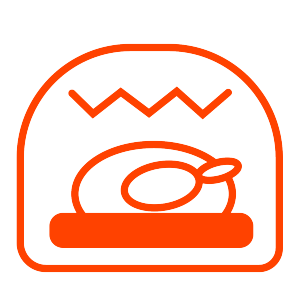
Broiling
Broiling uses high, direct heat from above to cook food quickly, often creating a crispy, golden-brown crust.
Best for: Fish fillets, steaks, sandwiches

Griddling
This type of cooking method uses a flat, solid cooking surface, such as a griddle or cast-iron pan, to cook food evenly with minimal fat.
Best for: Pancakes, burgers, quesadillas, grilled cheese, pork chops
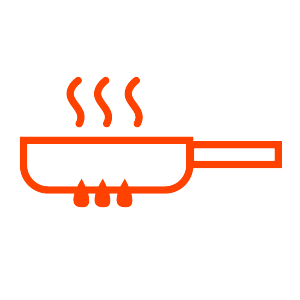
Pan-broiling
Pan-broiling cooks food in a dry sauté pan or skillet, using minimal fat and high heat.
Best for: Thin-cut meats, burgers

Pan-frying
Pan-frying uses moderate heat and a shallow amount of oil to cook food evenly while developing a crispy exterior.
Best for: Chicken, seafood, pork chops, fish fillets, hash browns

Sautéing
Sautéing involves quickly cooking food over high heat in a small amount of fat, preserving texture and enhancing flavors.
Best for: Stir-fried vegetables, buttered shrimp, garlic butter mushrooms
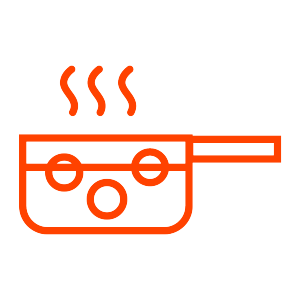
Deep-frying
Deep-frying fully submerges food in hot oil, producing a crispy, golden-brown crust while locking in moisture.
Best for: French fries, tempura, fried chicken
Combination Cooking Methods
Combination cooking techniques incorporate both moist-heat and dry-heat methods to create depth of flavor and enhanced textures.

Stewing
Stewing is a cooking method similar to simmering but involves cutting food into smaller pieces and cooking them slowly in a flavorful liquid. This method allows ingredients to absorb rich flavors while breaking down tougher cuts of meat for a melt-in-your-mouth texture.
Best for: Chicken adobo, beef mechado, pork menudo
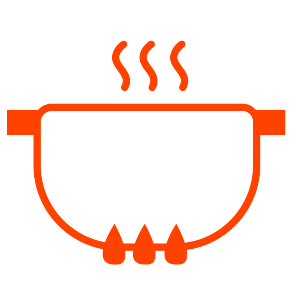
Braising
Braising combines searing food at high heat with slow cooking in a small amount of liquid. The slow infusion of flavors results in deep, complex tastes and fork-tender textures.
Best for: Short ribs, lamb shank, beef, galbi jjim
Looking to expand your menu with a mix of classic and innovative offerings? Incorporate different types of cooking methods and discover how they can elevate even the simplest ingredients. Mastering these techniques allows you to create dishes with exceptional tastes and textures.


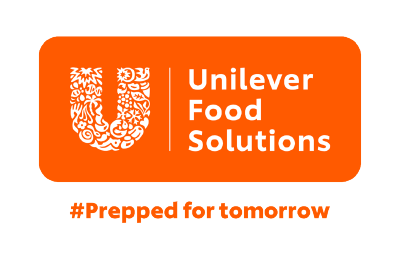
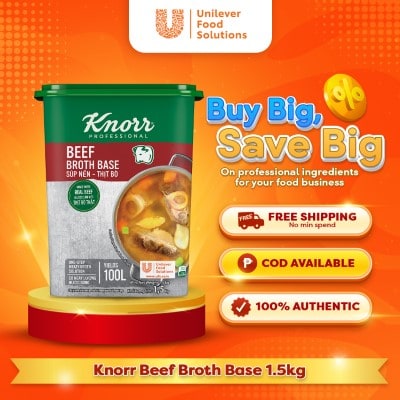


.jpg)
